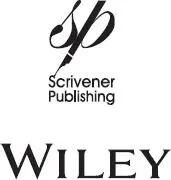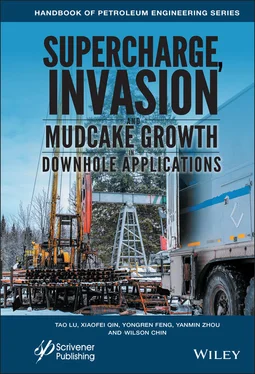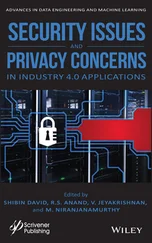308 300
309 301
310 302
311 303
312 304
313 305
314 306
315 307
316 308
317 309
318 310
319 311
320 312
321 313
322 314
323 315
324 316
325 317
326 318
327 319
328 320
329 321
330 322
331 323
332 324
333 325
334 326
335 327
336 328
337 329
338 330
339 331
340 332
341 333
342 334
343 335
344 336
345 337
346 338
347 339
348 340
349 341
350 342
351 343
352 344
353 345
354 346
355 347
356 348
357 349
358 350
359 351
360 352
361 353
362 354
363 355
364 356
365 357
366 358
367 359
368 360
369 361
370 362
371 363
372 364
373 365
374 366
375 367
376 368
377 369
378 370
379 371
380 372
381 373
382 374
383 375
384 376
385 377
386 378
387 379
388 380
389 381
390 382
391 383
392 384
393 385
394 386
395 387
396 388
397 389
398 390
399 391
400 392
401 393
402 394
403 395
404 396
405 397
406 398
407 399
408 400
409 401
410 402
411 403
412 404
413 405
414 406
415 407
416 408
417 409
418 410
419 411
420 412
421 413
422 414
423 415
424 416
425 417
426 418
427 419
428 420
429 421
430 422
431 423
432 424
433 425
434 426
435 427
436 428
437 429
438 430
439 431
440 432
441 433
442 434
443 435
444 436
445 437
446 438
447 439
448 440
449 441
450 442
451 443
452 444
453 445
454 446
455 447
456 448
457 449
458 450
459 451
460 452
461 453
462 454
463 455
464 456
465 457
466 458
467 459
468 460
469 461
470 462
471 463
472 464
473 465
474 466
475 467
476 468
477 469
478 470
479 471
480 472
481 473
482 474
483 475
484 476
485 477
486 478
487 479
488 480
489 481
490 482
491 483
492 484
493 485
494 486
495 487
496 488
497 489
498 490
499 491
500 492
501 493
502 494
503 495
504 496
505 497
506 498
507 499
508 500
509 501
510 502
511 503
Scrivener Publishing100 Cummings Center, Suite 541J Beverly, MA 01915-6106
Handbook of Petroleum Engineering Series
Series Editor: Wilson C. Chin
Scope:Covering every aspect of petroleum engineering, this new series sets the standard in best practices for the petroleum engineer. This is a must-have for any petroleum engineer in today’s changing industry.
About the Series Editor:
Wilson Chinearned his PhD from M.I.T. and his M.Sc. from Caltech. He has authored over twenty books with Wiley-Scrivener and other major scientific publishers, has more than four dozen domestic and international patents to his credit, and has published over one hundred journal articles, in the areas of reservoir engineering, formation testing, well logging, measurement while drilling, and drilling and cementing rheology.
Submission to the series:Phil Carmical, Publisher Scrivener Publishing (512)203-2236 pcarmical@scrivenerpublishing.com
Publishers at Scrivener Martin Scrivener ( martin@scrivenerpublishing.com) Phillip Carmical ( pcarmical@scrivenerpublishing.com)
Supercharge, Invasion and Mudcake Growth in Downhole Applications
by
Tao Lu
Xiaofei Qin
Yongren Feng
Yanmin Zhou
and
Wilson Chin

This edition first published 2021 by John Wiley & Sons, Inc., 111 River Street, Hoboken, NJ 07030, USA and Scrivener Publishing LLC, 100 Cummings Center, Suite 541J, Beverly, MA 01915, USA
© 2021 Scrivener Publishing LLC
For more information about Scrivener publications please visit www.scrivenerpublishing.com.
All rights reserved. No part of this publication may be reproduced, stored in a retrieval system, or transmitted, in any form or by any means, electronic, mechanical, photocopying, recording, or otherwise, except as permitted by law. Advice on how to obtain permission to reuse material from this title is available at http://www.wiley.com/go/permissions.
Wiley Global Headquarters
111 River Street, Hoboken, NJ 07030, USA
For details of our global editorial offices, customer services, and more information about Wiley products visit us at www.wiley.com.
Limit of Liability/Disclaimer of Warranty
While the publisher and authors have used their best efforts in preparing this work, they make no representations or warranties with respect to the accuracy or completeness of the contents of this work and specifically disclaim all warranties, including without limitation any implied warranties of merchantability or fitness for a particular purpose. No warranty may be created or extended by sales representatives, written sales materials, or promotional statements for this work. The fact that an organization, website, or product is referred to in this work as a citation and/or potential source of further information does not mean that the publisher and authors endorse the information or services the organization, website, or product may provide or recommendations it may make. This work is sold with the understanding that the publisher is not engaged in rendering professional services. The advice and strategies contained herein may not be suitable for your situation. You should consult with a specialist where appropriate. Neither the publisher nor authors shall be liable for any loss of profit or any other commercial damages, including but not limited to special, incidental, consequential, or other damages. Further, readers should be aware that websites listed in this work may have changed or disappeared between when this work was written and when it is read.
Library of Congress Cataloging-in-Publication Data
ISBN 978-1-119-28332-4
Cover image: Downhole Logging, Aleksei Zakirov | Dreamstime.com
Cover design by Kris Hackerott
Set in size of 11pt and Minion Pro by Manila Typesetting Company, Makati, Philippines
Printed in the USA
10 9 8 7 6 5 4 3 2 1
Formation testing, unlike conventional logging methods focused on resistivity, acoustic, nuclear or magnetic resonance approaches, provides direct results as opposed to indirect inferred properties. In sampling, actual in-situ fluids are collected for surface evaluation. And in pressure transient analysis, properties that pertain to production economics like mobility, compressibility, anisotropy and pore pressure are obtained directly from the underlying Darcy flow equations. By and large, the conventional subject matter deals with single, dual and multiprobe tools where pad nozzles are displaced axially relative to each other and along the same azimuth. This being so, idealized spherical “source” or “sink” methods are used in formulating forward and inverse problems.
Читать дальше











